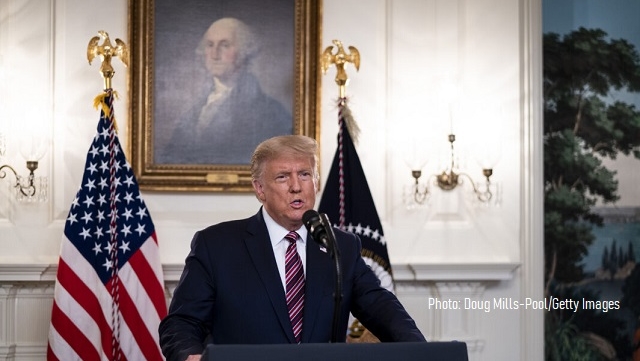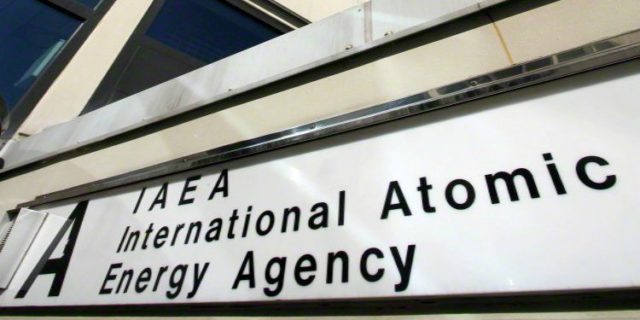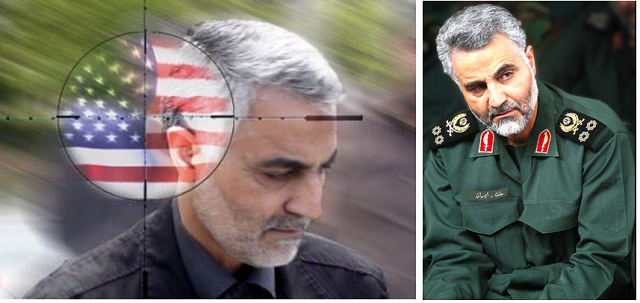Trump Adds These 20 Names to His List of Supreme Court Candidates

President Donald Trump publicly added 20 names Wednesday to his list of candidates for the Supreme Court, including six women, three Senate Republicans, and a state attorney general. Also new to the list are prominent government lawyers who haven’t served as judges.
“Every one of these individuals will ensure equal justice, equal treatment, and equal rights for citizens of every race, color, religion, and creed,” Trump said in making the announcement at the White House. “Together, we will defend our righteous heritage and preserve our magnificent American way of life.”
For the most part, the president’s 20 new Supreme Court prospects follow the traditional pattern in which federal appeals court judges, also known as circuit judges, are considered for the high court.
Currently, all but one of the nine justices were circuit judges before being nominated to the Supreme Court. Only Justice Elena Kagan never had been a judge before.
How are socialists deluding a whole generation? Learn more now >>
When running for president in 2016, Trump adopted a list of potential Supreme Court nominees from recommendations by The Heritage Foundation and the Federalist Society. He has appointed two justices who were on that list: Neil Gorsuch and Brett Kavanaugh.
“The names I know are really good people, but I’m not familiar with everyone,” John Malcolm, director of the Meese Center for Legal and Judicial Studies, told The Daily Signal. “It’s an impressive list. Not everyone was on my list, but many were.”
In his announcement of the names, Trump laid out the stakes if the high court were to shift back toward the liberal side.
“Unfortunately, there is a growing radical left movement that rejects the principle of equal treatment under the law,” Trump said, adding:
If this extreme movement is granted a majority on the Supreme Court, it will fundamentally transform America without a single vote of Congress. Radical justices will erase the Second Amendment, silence political speech and require taxpayers to fund extreme, late-term abortion.
They will give unelected bureaucrats the power to destroy millions of American jobs. They will remove the words ‘under God’ from the Pledge of Allegiance. They will unilaterally declare the death penalty unconstitutional, even for the most depraved mass murderers. They will erase national borders, cripple police departments, and grant new protections to anarchists, rioters, violent criminals, and terrorists.
Here’s a look at Trump’s new contenders for the high court.
Politicians
Trump’s additions include four elected officials, which has been a rare occupation for nominees.
Former Justice Sandra Day O’Connor had been an Arizona state senator before becoming a state judge. But going from elected office directly to the Supreme Court is rare.
The most notable example is President Dwight Eisenhower’s naming of California Gov. Earl Warren as chief justice in 1953.
The politicians on Trump’s list are:
Kentucky Attorney General Daniel Cameron, a Republican first elected in 2019. Cameron, 34, is the state’s 51st attorney general. He was previously legal counsel to Senate Majority Leader Mitch McConnell, R-Ky. He earned his law degree, cum laude, from the University of Louisville Brandeis School of Law.
Sen. Tom Cotton, R-Ark., first elected to the House in 2014. Cotton, 43, was an Army captain who served in Afghanistan and Iraq, Cotton received his law degree from Harvard Law School.
Sen. Ted Cruz, R-Texas, first elected in 2012. A former solicitor general of Texas, he has argued cases before the U.S. Supreme Court. A law clerk to former Chief Justice William H. Rehnquist, Cruz, 49, received his law degree, magna cum laude, from Harvard Law School.
Sen. Josh Hawley, R-Mo., elected in 2018. Hawley, 40, previously was Missouri’s attorney general and an associate professor at the University of Missouri School of Law. He also was a lawyer with the Becket Fund for Religious Liberty. A former clerk for Chief Justice John Roberts, Hawley received his law degree from Yale Law School.
A fourth Senate Republican, Mike Lee of Utah, was on Trump’s 2016 list.
Federal Appeals Judges
If history is a guide, one of these new names—all Trump appointees—is the most likely to become a Supreme Court justice if the president gets second term, since circuit judges tend to be the farm team for the high court.
Here are the new appeals court judges on the list:
Peter Phipps, 47, of Pennsylvania, on the 3rd Circuit Court of Appeals since July 2019. Phipps also served as a U.S. district judge for the Western District of Pennsylvania. He was senior trial counsel in the federal programs branch of the Justice Department’s Civil Division. He received his law degree from Stanford Law School.
Allison Jones Rushing, 38, of North Carolina, on the 4th Circuit since March 2019. She clerked for Justice Clarence Thomas and then-Judge Neil Gorsuch on the 10th Circuit. She received her law degree, magna cum laude, from Duke University School of Law.
Lawrence VanDyke, 47, of Nevada, confirmed by the Senate last December to serve on the 9th Circuit. VanDyke previously was deputy assistant attorney general for the Environment and Natural Resources Division of the Justice Department. He also was solicitor general of both Nevada and Montana, defending the policies of those states before the U.S. Supreme Court. He received his law degree, magna cum laude, from Harvard.
Bridget Bade, 54, of Arizona, on the 9th Circuit since April 2019. Bade was both a U.S. magistrate judge and an assistant U.S. attorney for the District of Arizona. She received her law degree, cum laude, from Arizona State University’s Sandra Day O’Connor College of Law.
Stuart Kyle Duncan, 48, of Louisiana, on the 5th Circuit since April 2018. Previously general counsel of the Becket Fund for Religious Liberty, he also argued cases before the U.S. Supreme Court as solicitor general of Louisiana. He received his law degree from the Paul M. Hebert Law Center at Louisiana State University and his LL.M from Columbia University Law School.
James Ho, 47, of Texas, on the 5th Circuit since December 2017. He was solicitor general of Texas and clerked for Justice Clarence Thomas. He received his law degree with high honors from the University of Chicago Law School.
Gregory Katsas, 56, of Virginia, on the District of Columbia Circuit Court of Appeals since December 2017. Katsas was both deputy assistant and deputy counsel to the president, as well as the Justice Department’s assistant attorney general for the Civil Division. He clerked for Thomas both at the U.S. Supreme Court and the U.S. Court of Appeals for the District of Columbia Circuit. He received his law degree, cum laude, from Harvard.
Barbara Lagoa, 52, of Florida, on the 11th Circuit since December 2019. Previously a justice on the Supreme Court of Florida, she also was an assistant U.S. attorney for the Southern District of Florida. Lagoa received her law degree from Columbia.
Other Government Officials
Former Chief Justice William Rehnquist, like Kagan, was solicitor general of the United States—the No. 4 official at the Justice Department—before ascending to the high court.
Trump’s new candidates include these top-ranking government lawyers and officials:
Paul Clement, 54, of Virginia, U.S. solicitor general during the George W. Bush administration from 2005 through 2008, when he argued more than 100 cases before the high court. He previously clerked for Justice Antonin Scalia and received his law degree, magna cum laude, from Harvard.
Steven Engel, 46, of Washington, D.C., assistant attorney general for the Justice Department’s Office of Legal Counsel, which advises the president, since November 2017. He previously was deputy assistant attorney general in that office. A former clerk for Justice Anthony Kennedy, he received his law degree from Yale.
Noel Francisco, 51, solicitor general from September 2017 to July 2020. He previously served in the Office of Legal Counsel as deputy assistant attorney general and as associate counsel to the president. A former clerk for Scalia, he received his law degree with high honors from the University of Chicago.
Christopher Landau, 56, of Maryland, U.S. ambassador to Mexico since August 2019. Landau clerked for Scalia and for Thomas, both at the Supreme Court and the Court of Appeals for the District of Columbia Circuit. He received his law degree, magna cum laude, from Harvard.
Kate Todd of Virginia, former deputy assistant and deputy counsel to President George W. Bush. She clerked for Thomas and received her law degree, magna cum laude, from Harvard.
Federal District Judges
District judges rarely are appointed to the Supreme Court, but two Trump appointees made his expanded list.
Martha Pacold, 41, on the bench of the Northern District of Illinois since August 2019. She previously was deputy general counsel of the Treasury Department. A former clerk to Thomas at the Supreme Court, she received her law degree with honors from the University of Chicago.
Sarah Pitlyk, 43, on the bench of the Eastern District of Missouri since December 2019. Previously special counsel at the Thomas More Society, she clerked for Kavanaugh at the U.S. Court of Appeals for the District of Columbia Circuit. She received her law degree from Yale Law.
State Supreme Court Justice
O’Connor served as an Arizona state judge before President Ronald Reagan nominated her in July 1981 to become the high court’s first female justice.
Trump’s new list includes one state Supreme Court justice: Carlos Muniz, 51, of the Florida Supreme Court, appointed by Gov. Ron DeSantis in January 2019.
Muniz previously was general counsel to the U.S. Department of Education and served in various positions in Florida state government, including as deputy attorney general and chief of staff to then-Attorney General Pam Bondi. He received his law degree from Yale.
COLUMN BY
Fred Lucas
Fred Lucas is chief national affairs correspondent for The Daily Signal and co-host of “The Right Side of History” podcast. Lucas is also the author of “Abuse of Power: Inside The Three-Year Campaign to Impeach Donald Trump.” Send an email to Fred. Twitter: @FredLucasWH.
RELATED ARTICLES:
Voter Fraud Cases Emerge in Battleground States of North Carolina, Georgia
Restoring a Culture of Life: How the Administration Is Stopping Abortion and Infanticide
Are ‘Nice White Parents’ to Blame for Failures in the Education System?
Problematic Women: Diamond and Silk Discuss Black Lives Matter
A Note for our Readers:
Democratic Socialists say, “America should be more like socialist countries such as Sweden and Denmark.” And millions of young people believe them…
For years, “Democratic Socialists” have been growing a crop of followers that include students and young professionals. America’s future will be in their hands.
How are socialists deluding a whole generation? One of their most effective arguments is that “democratic socialism” is working in Scandinavian countries like Sweden and Norway. They claim these countries are “proof” that socialism will work for America. But they’re wrong. And it’s easy to explain why.
Our friends at The Heritage Foundation just published a new guide that provides three irrefutable facts that debunks these myths. For a limited time, they’re offering it to readers of The Daily Signal for free.
Get your free copy of “Why Democratic Socialists Can’t Legitimately Claim Sweden and Denmark as Success Stories” today and equip yourself with the facts you need to debunk these myths once and for all.
GET YOUR FREE COPY NOW »
EDITORS NOTE: This Daily Signal column is republished with permission. ©All rights reserved.



